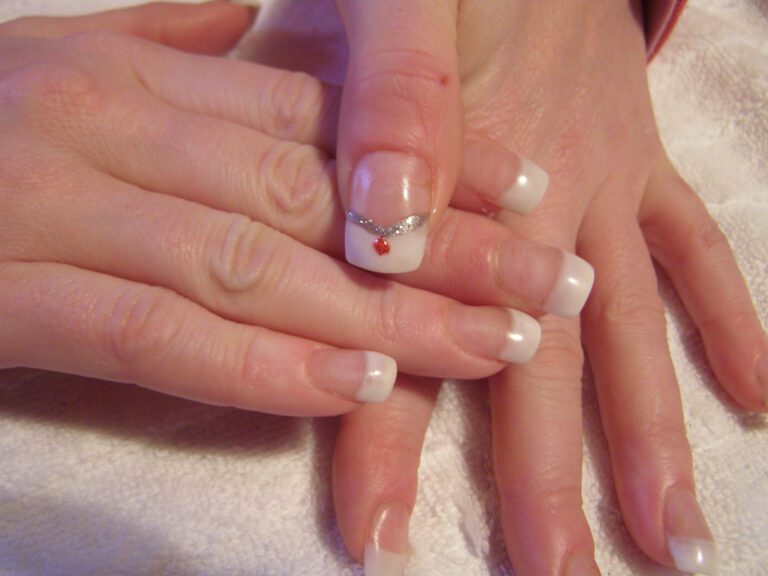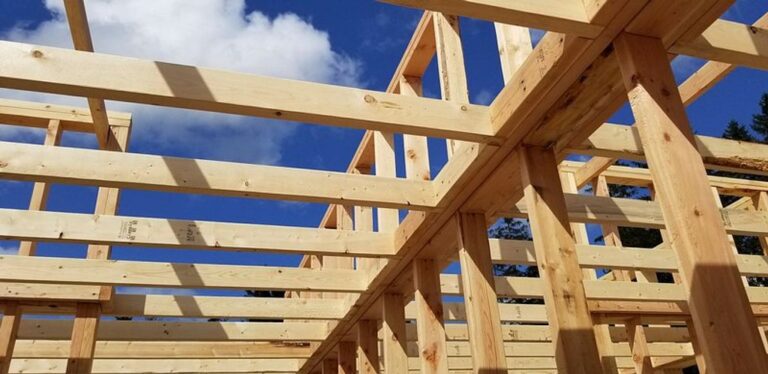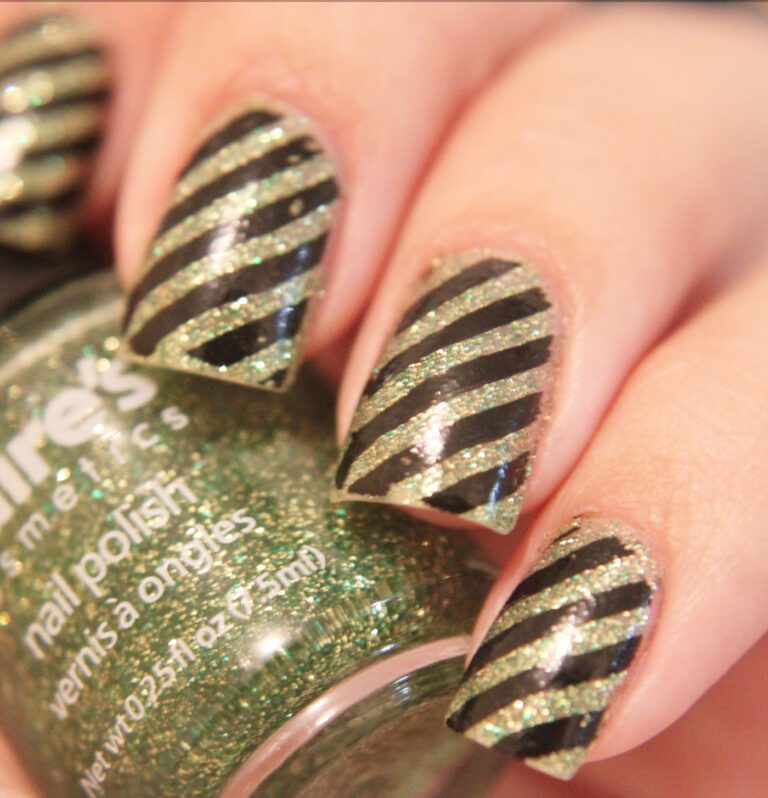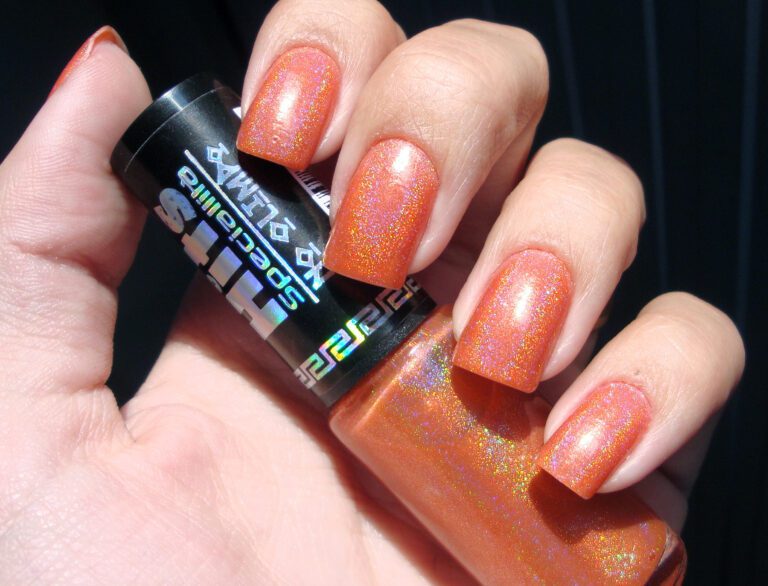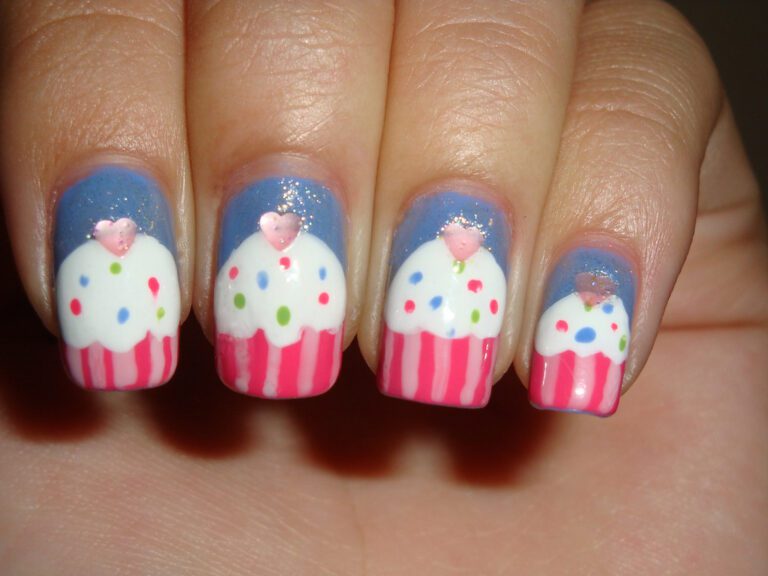“Self-Repairing Beauties: Can Nails Repair Themselves?”
Nails are a fascinating part of the human body, serving both functional and aesthetic purposes. In this article, we will explore the intricate anatomy of nails, the science behind nail damage, the self-repair mechanism of nails, ways to enhance natural nail repair, limitations of nail self-repair, and innovations in nail repair and care. Join us as we delve into the world of self-repairing beauties and uncover the secrets of nail health and regeneration.
Key Takeaways
- Nails have a complex structure and undergo a continuous growth and regeneration process.
- Common causes of nail trauma include excessive moisture, harsh chemicals, and physical injury.
- Understanding nail diseases and disorders is crucial for maintaining nail health and seeking appropriate treatment.
- Nutrition plays a significant role in promoting nail health, and proper nail care practices can enhance natural nail repair.
- While nails have a self-repair mechanism, certain conditions and injuries may require professional intervention for optimal recovery.
Unveiling the Anatomy of Nails

The Structure of the Nail
The structure of the nail is a platelike, keratinous, translucent structure that consists of highly specialized cells. It corresponds to the claw, hoof, or talon of other vertebrates. The nail bed contains blood vessels, nerves, and melanocytes that produce melanin. As the root grows, the nail streams down along the nail bed and adds material. It has been known that the nail unit consists of a pool of undifferentiated cells which provide sustained growth and nail repair throughout life. Implement a table for presenting structured, quantitative data. Ensure it’s succinct and formatted correctly in Markdown. Optionally, include a Markdown blockquote for important tips or advice, avoiding citing sources.
Growth and Regeneration Process
Nails are remarkable for their ability to grow and repair themselves. The process begins at the nail matrix, a tissue under the skin at the nail’s base responsible for cell production. These cells multiply and harden through a process called keratinization, forming the nail plate that we see.
Growth rate varies among individuals and can be influenced by factors such as age, nutrition, and health. On average, fingernails grow about 3.5 millimeters per month, while toenails grow more slowly. Here’s a quick glance at the growth rates:
- Fingernails: 3.5 mm/month
- Toenails: 1.5 mm/month
Tip: To support nail growth and regeneration, maintain a balanced diet rich in vitamins and minerals.
In the event of injury, nails have a self-repair mechanism that allows the matrix to continue producing new cells, gradually replacing the damaged area. However, the recovery time can vary depending on the extent of the damage and individual health factors.
The Science Behind Nail Damage

Common Causes of Nail Trauma
Nail trauma can occur from a variety of incidents, often leading to conditions such as subungual hematoma, where blood collects under the nail due to acute trauma. This can be the result of dropping a heavy object on a toe or finger, or experiencing a severe pinch or crush injury.
Crush injuries to the nails are particularly concerning as they can cause significant damage to the nail bed and matrix, potentially leading to long-term issues. These injuries can range from simple bruises to more complex situations like nail bed avulsion, where the nail is forcibly separated from its bed.
Tip: Immediate and appropriate care is crucial for nail trauma. Cooling the injury and keeping the affected area elevated can help reduce swelling and pain.
Factors such as repetitive stress or environmental exposure also contribute to nail trauma. For instance, prolonged water exposure or contact with harsh chemicals can weaken nails, making them more susceptible to damage. It’s important to protect nails from such conditions to maintain their health and strength.
Understanding Nail Diseases and Disorders
Nail diseases and disorders can range from mild cosmetic concerns to serious conditions that may indicate underlying health issues. Fungal infections, for example, are a common nail disorder that can cause discoloration, thickening, and even nail separation. Other conditions, such as psoriasis or eczema, can also affect the nails, leading to pitting, ridges, or abnormal growth patterns.
It’s crucial to differentiate between temporary damage and chronic disorders. Temporary issues often resolve with proper care and prevention, while chronic conditions may require medical intervention. Here’s a brief overview of some common nail diseases and disorders:
- Fungal infections (onychomycosis)
- Psoriasis
- Eczema
- Nail dystrophy
- Paronychia (infection of the nail fold)
Tip: Early detection and treatment of nail disorders are essential for preventing long-term damage and promoting healthy nail regeneration.
Understanding the symptoms and causes of these disorders is the first step towards maintaining nail health. A balanced diet, good hygiene, and protective measures can help prevent many nail diseases, but persistent or severe symptoms warrant professional evaluation.
The Self-Repair Mechanism of Nails

How Nails Heal After Injury
When a nail is injured, the body initiates a complex healing process to repair the damage. Initially, blood vessels constrict to reduce bleeding, followed by an inflammatory phase where white blood cells remove debris and prevent infection. Next, the growth phase begins, characterized by the production of new nail cells at the nail matrix, the area under the cuticle where nail growth originates.
Nails grow continuously, but the rate can be influenced by several factors such as age, nutrition, and overall health. The average growth rate for fingernails is about 3.47 mm per month, while toenails grow more slowly, at about 1.62 mm per month. Here’s a simple breakdown of the stages of nail recovery:
- Inflammatory Stage: Swelling and redness as the body’s immune response kicks in.
- Proliferative Stage: New nail cells are produced and start to push out the damaged nail.
- Maturation Stage: The new nail continues to grow and eventually replaces the old, damaged nail.
Tip: To support nail recovery, keep the injured area clean and protected, and consider a diet rich in proteins and vitamins that promote nail growth.
It’s important to note that while nails have a remarkable ability to self-repair, the process is not instantaneous and requires patience. In cases of severe injury or persistent problems, it’s crucial to seek professional advice.
Factors Influencing Nail Recovery
The journey to nail recovery is not uniform for everyone; various factors can influence the healing process. Genetics play a pivotal role, as they determine the fundamental aspects of nail growth and strength. Additionally, the age of an individual is a significant factor—nails tend to regenerate more slowly as we age.
External factors such as environmental conditions and exposure to chemicals can also affect nail recovery. For instance, frequent contact with water or harsh cleaning agents can weaken nails, making them more susceptible to damage and slower to heal. Proper nutrition is crucial; a diet lacking in essential vitamins and minerals can impede nail repair.
Lifestyle choices, such as the use of nail polish and artificial nails, can impact the health of your nails. It’s important to give nails a break from these products to allow them to breathe and recover. Remember:
"Consistent care and attention to the health of your nails are key to promoting optimal recovery and preventing future damage."
By understanding these factors and adjusting your nail care routine accordingly, you can enhance your nails’ natural ability to repair and maintain their beauty.
Enhancing Natural Nail Repair

Nutrition and Nail Health
The health of your nails is significantly influenced by the nutrients you consume. A balanced diet rich in vitamins and minerals is essential for maintaining strong and resilient nails. For instance, biotin, also known as vitamin B7, plays a pivotal role in the health of nails, aiding in strengthening and promoting growth.
Certain deficiencies can manifest in the nails, revealing potential nutritional gaps. A lack of vitamin B12, for example, may lead to changes in nail color, indicating the need for dietary adjustment or supplementation.
To ensure optimal nail health, consider incorporating the following nutrients into your diet:
- Protein: Keratin, a protein, is the primary component of nails.
- Iron: Prevents brittle nails and supports growth.
- Zinc: Essential for nail tissue growth and repair.
- Omega-3 Fatty Acids: Moisturize the nail bed and improve nail luster.
Tip: A consistent intake of these nutrients can help maintain nail integrity and prevent common issues such as brittleness and splitting.
Best Practices for Nail Care
Maintaining healthy nails is not just about aesthetics; it’s about overall nail health. To ensure your nails are in top condition, follow these best practices for nail care. First and foremost, keep your nails clean and dry to prevent bacteria from thriving under your nail bed. Regularly trim your nails to avoid snags and tears that can lead to further damage.
When it comes to nail care tools, always opt for sanitized equipment. This is crucial in preventing infections. Moisturizing is also key; apply a nourishing cuticle oil to promote hydration and protect the nail bed. Avoid harsh chemicals by choosing nail polish removers that are acetone-free, as acetone can strip nails of their natural oils.
Tip: Be gentle with your nails. Avoid using them as tools to pick or pry things open, which can cause unnecessary stress and breakage.
Lastly, give your nails a break from polish and artificial nails occasionally to allow them to breathe and recover. Implementing these practices into your routine can significantly enhance the natural repair process of your nails.
Limitations of Nail Self-Repair

When to Seek Professional Help
While nails have a remarkable ability to repair themselves, certain conditions warrant professional medical attention. Persistent pain, changes in nail color or shape, and signs of infection are indicators that self-care may not suffice. Here are some scenarios where consulting a healthcare provider is advisable:
- Persistent pain that doesn’t subside with home remedies.
- Unusual nail discoloration, such as dark streaks or white spots.
- Signs of infection, including redness, swelling, or pus.
- Nails that are excessively thick, brittle, or change shape.
- Injury that results in severe nail damage or detachment.
Tip: Early intervention can prevent complications and ensure proper healing. If you’re unsure about the severity of your nail condition, it’s always best to err on the side of caution and consult a professional.
Conditions That Hinder Nail Regeneration
While nails possess a remarkable ability to repair themselves, certain conditions can significantly impede this natural regeneration process. Factors such as age, nutritional deficiencies, and underlying health issues play a crucial role in the nail’s capacity to recover.
Age is a primary factor, as nail growth slows down with time, reducing the body’s ability to quickly mend nail damage. This is particularly evident in older adults, where nails may also exhibit signs of other natural changes.
A balanced diet is essential for nail health. Lack of proper nutrition can lead to brittle nails that are more prone to damage and slower to heal. It’s important to consume foods rich in vitamins and minerals that support nail strength and growth.
Certain medical conditions can also interfere with nail regeneration. For example, diseases that affect circulation or the immune system can hinder the supply of nutrients and the removal of waste products from the nail bed, thereby slowing the healing process.
Tip: To support nail regeneration, maintain a diet rich in biotin, iron, and protein, and consult a healthcare professional if you suspect an underlying health condition is affecting your nails.
Innovations in Nail Repair and Care

Advancements in Nail Treatments
The realm of nail care has seen significant advancements in treatments, with a focus on both aesthetics and health. Innovative treatments have emerged, offering solutions that not only beautify but also strengthen and protect the natural nail. For instance, keratin-based serums and hydrating cuticle oils have become staples in nail care routines, promoting growth and preventing breakage.
Recent developments also include bioactive coatings that act as a shield against environmental damage, while allowing the nail to breathe and maintain its natural moisture balance. These treatments are often enriched with vitamins and antioxidants, providing the nails with essential nutrients.
Customized nail care is another trend gaining traction. Tailored to individual needs, these treatments take into account factors such as lifestyle, nail type, and personal preferences, ensuring a personalized approach to nail health.
Tip: Regularly incorporating advanced treatments into your nail care regimen can significantly improve the overall health and appearance of your nails.
The Future of Nail Health Technology
As we look to the future, the intersection of beauty and technology is paving the way for groundbreaking advancements in nail health. The integration of biotechnology and nanomaterials is expected to lead to treatments that not only repair damaged nails but also strengthen them against future injuries. Imagine a world where your nails communicate with your smartphone to alert you about nutritional deficiencies or health issues.
Innovations such as smart polish that changes color based on body temperature or UV exposure and nail chips that monitor health metrics are not far from becoming a reality. These technologies promise to revolutionize the way we think about nail care, turning manicures into opportunities for health assessments and personalized beauty experiences.
Tip: To stay ahead in nail health, keep an eye on emerging technologies and consider incorporating them into your routine as they become available.
The potential for these technologies to improve nail health is immense, offering more than just aesthetic enhancements. They represent a new era of nail care where beauty, health, and technology merge to create smarter, more resilient solutions for nail maintenance and repair.
Innovations in nail repair and care have revolutionized the way we maintain and beautify our nails. From advanced nail strengthening treatments to innovative nail art designs, the world of nail care is constantly evolving. At NAILinspire.com, we are dedicated to providing you with the latest trends, tips, and techniques to keep your nails healthy and stylish. Whether you’re looking for inspiration, tutorials, or product recommendations, our ultimate online nail art design library has everything you need to elevate your nail game. Explore the endless possibilities and unleash your creativity with NAILinspire.com today!
Frequently Asked Questions
Can nails really repair themselves?
Yes, nails have the ability to self-repair to some extent, especially after minor injuries or damage.
What are the best practices for promoting natural nail repair?
Maintaining proper nail hygiene, consuming a balanced diet rich in essential nutrients, and avoiding excessive exposure to harsh chemicals can promote natural nail repair.
When should I seek professional help for nail problems?
It is advisable to seek professional help if you experience persistent nail issues, severe trauma, or signs of infection.
What factors influence the speed of nail recovery after injury?
Factors such as overall health, nutrition, age, and the severity of the injury can influence the speed of nail recovery.
Are there any conditions that can hinder the self-repair of nails?
Certain medical conditions, nutritional deficiencies, and chronic nail trauma can hinder the self-repair mechanism of nails.
What are the latest advancements in nail treatments and care?
Recent advancements include innovative nail strengthening products, improved nail repair technologies, and personalized nail care regimens based on individual needs.


